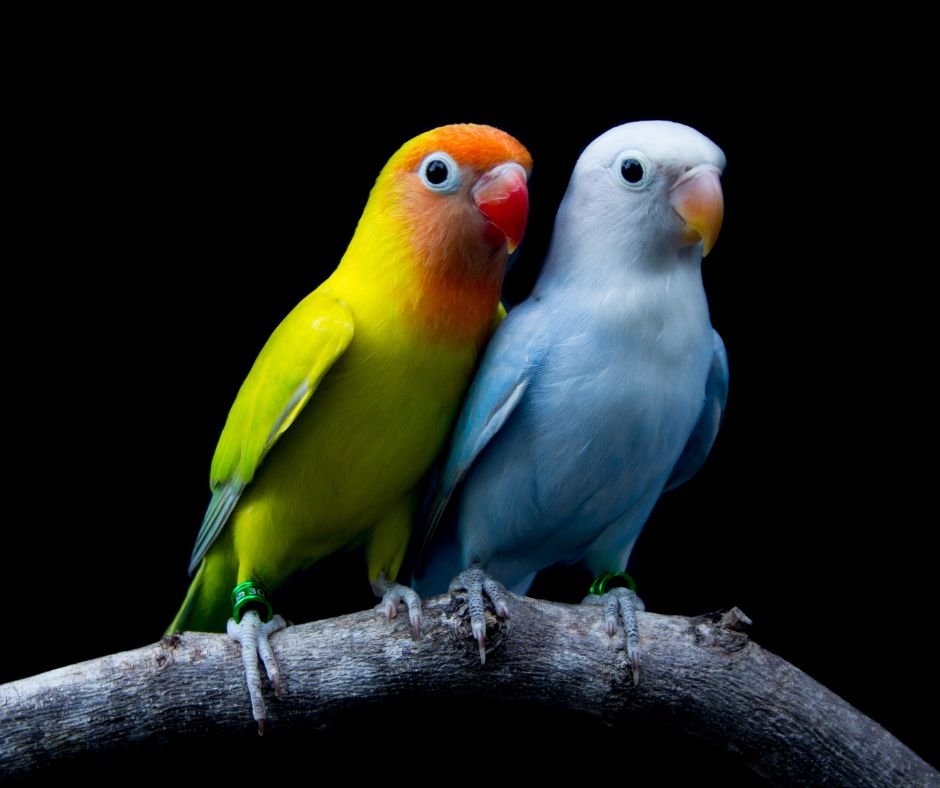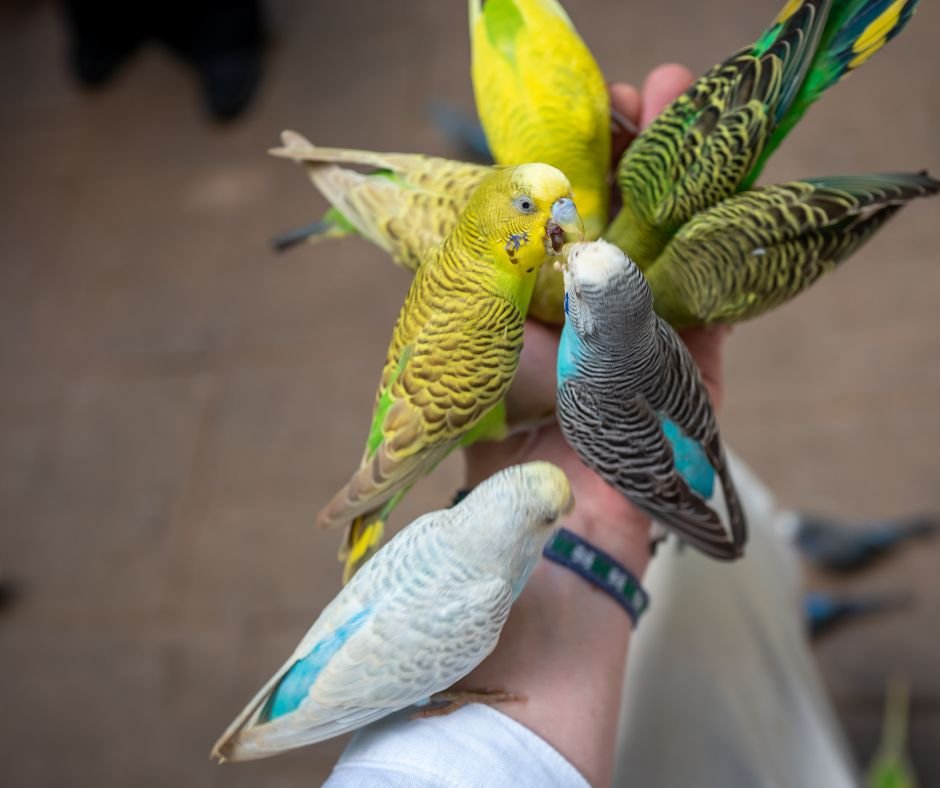Welcome to the delightful world of lovebirds, where vibrant colors meet charming personalities! If you’ve ever wondered “how to train lovebirds,” you’re about to embark on a rewarding journey that will deepen the bond between you and your feathered friend.
Lovebirds are known for their intelligence, sociability, and affectionate nature, making them ideal pets for those willing to invest time and love into training them. This comprehensive guide is designed to walk you through the process step by step, ensuring that you and your lovebird enjoy every training moment.
So, whether you’re a first-time bird owner or looking to refine your training techniques, let’s spread our wings together and learn how to train lovebirds effectively!
Understanding Your Lovebird: Behavior and Environment
Before diving into training, it’s essential to bond with your lovebird. They need to trust you just like you’d want to trust someone new in your home. Lovebirds are bright and social creatures who thrive in safe and stimulated environments.
A spacious cage with various toys is crucial for their happiness and health. They need room to play and exercise and quiet time to rest. Consistency in their daily routine for feeding and playtime also helps them feel secure.
When training, choose a calm area to minimize distractions and ensure safety. Observing their likes and dislikes, you’ll understand their unique personalities. This understanding is critical to a successful training journey.
Remember, a well-understood lovebird is more likely to respond positively to training. Let’s begin this journey with patience and watch your bond with your lovebird grow!

Are Lovebirds Hard to Train?
You might ask, “Is training these small, colorful birds hard?” Guess what? It’s easier than you think! Lovebirds are pretty smart and catch on quickly when you teach them new things. But just like learning to ride a bike or skate, it takes some patience and practice.
Think of it as making a new friend. You need to be kind, gentle, and patient. Show your lovebird that you’re someone they can trust and have fun with. With regular, short training sessions and encouragement, your lovebird will start learning tricks and following commands.
The key is to keep at it every day, even if it’s just for a little while. Before you know it, your lovebird will be doing amazing things, all because you took the time to teach them with love and patience!
Read more: How to Train a Parrot
Preparing for Training: Trust and Bonding
Before you begin training, you must become best buddies with your lovebird. Here’s how to build that special trust:
- Daily Time: Hang out with your bird daily. The more time you spend, the closer you’ll get.
- Soft Talk: Use a gentle voice. Lovebirds like it when you speak softly to them.
- Yummy Treats: Give them their favorite snacks. It’s like saying “I care” in bird language.
- Be Patient: Wait until they’re comfy with you. Once they feel safe, training will be much easier and fun!
By doing these things, you’ll create a loving bond. And with that trust, training will go smoothly!

How to Train Lovebirds: Step-by-Step Guide
Training your lovebird isn’t just about teaching tricks; it’s about creating a bond of trust and understanding. Here’s a fun and easy guide to make training your lovebird a breeze. Follow these six steps, and watch as your lovebird follows commands and performs cute tricks!
Say Hello with Treats
Begin your training sessions by offering your lovebird some treats. Choose healthy options like small pieces of fruit or special bird treats. It helps create a positive association with training time.
Hand Time
Slowly introduce your hand into the cage. Keep it still, and let your lovebird come to you. It might take a few tries, but be patient. Your hand will soon become a safe and familiar space for them.
Step Up
Once your lovebird is comfortable with your hand, gently encourage it to step onto your finger or a stick you’re holding. Use calming words and be patient. This “step up” command is a foundational skill for further training.
Learning Words and Tricks
Lovebirds are smart! Start teaching them simple words or sounds, and reward them when they mimic you. You can teach them fun tricks like turning in circles or moving objects. Remember, gentle repetition and lots of praise are key!
Play Outside the Cage
After your lovebird is comfortable with the basics, allow some free time outside the cage in a safe, enclosed space. Supervise their playtime and practice your training in this new environment. They’ll love the extra space to fly and explore!
Regular Practice
Consistency is important. Keep training sessions short but regular. About 10-15 minutes a day is perfect. This keeps your lovebird engaged and looking forward to learning without getting tired or bored.
Remember, the training goal is not just about teaching tricks; it’s about enhancing the bond and understanding between you and your lovebird. Be patient and consistent, and most importantly, enjoy this time with your feathered friend.
With this step-by-step guide, you’re well on your way to becoming an expert in “how to train lovebirds” and ensuring a happy, healthy relationship with your pet!
Advanced Training Techniques and Tips
Once you and your lovebird master the basics, it’s time to try some cool, advanced tricks! Here are a few ideas:
- Dance Moves: Teach your lovebird to bob its head or move in a circle to music like parrot. Start by gently swaying while holding them, then encourage them to mimic you with treats.
- Fetch: Yes, lovebirds can learn to fetch! Use a tiny, light ball or toy. Show them how to pick it up and then trade it for a treat.
- Color Recognition: Lovebirds can learn colors! Use colored paper or toys and teach them to pick your desired color. Reward them when they get it right.
- Mimicking Tunes: Try whistling a simple tune consistently if your lovebird likes to sing. With time, they might start whistling it back!
Always use positive words and rewards, and never get upset or loud. Training should be fun and rewarding for both of you. Keep sessions short and sweet, and watch as your clever lovebird learns these impressive new tricks!
Read more: How to Train a Budgie
People Also Asked
Do Lovebirds Like to Be Caged?
Lovebirds need a cozy home, but they also love to stretch their wings. Ensure they have a big enough cage and spend some time out of it under your watch. They’ll be happier and healthier for it!
Are Lovebirds Hard to Train?
Lovebirds are pretty easy to train if you are patient and kind. They are intelligent and can learn many things. The trick is to start slowly, be gentle, and play with them daily. Give them treats, and they’ll learn tricks and follow commands.
What Is the Best Way to Tame a Lovebird?
The best way to tame a lovebird is to spend lots of time with them. Whisper, give them their favorite snacks, and let them get used to you. Always be gentle and calm around them. Soon, they’ll trust you and won’t be scared to sit on your hand or play with you.
Can You Potty Train a Lovebird?
Yes, you can potty train a lovebird with patience and consistency. Watch for signs when they need to go and gently place them where it’s okay to do their business. Use a command word each time. It takes time, but your lovebird can learn to go potty in the right place with regular practice!
Final Words
Congratulations on taking this incredible journey on how to train lovebirds! By now, you should feel more confident and equipped with the necessary knowledge to foster a loving and understanding relationship with your pet.
Remember, training lovebirds is about patience, consistency, and positive reinforcement. As you continue to practice and bond with your feathered companion, you’ll witness their progress and enjoy the beautiful connection that grows between you.
Keep nurturing that bond, stay curious, and never hesitate to seek further learning. Your lovebird is not just a pet; it’s a friend for life. Happy training, and may your days be filled with your well-trained lovebird’s joyous chirps and affection!






